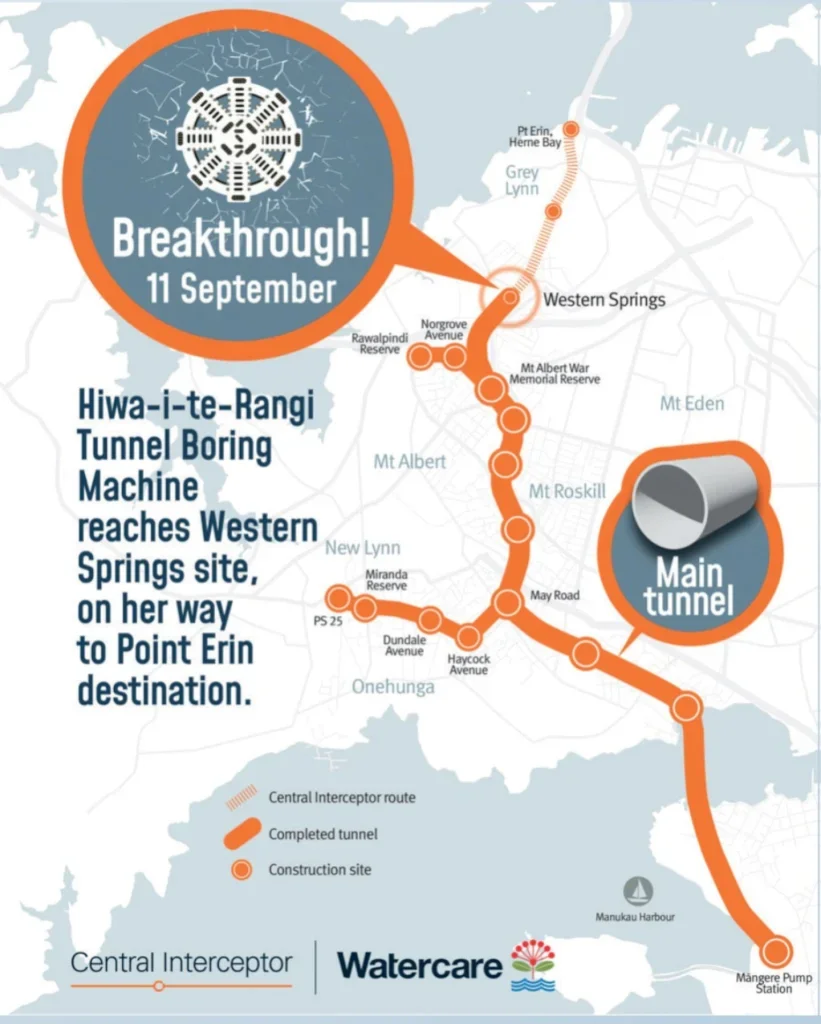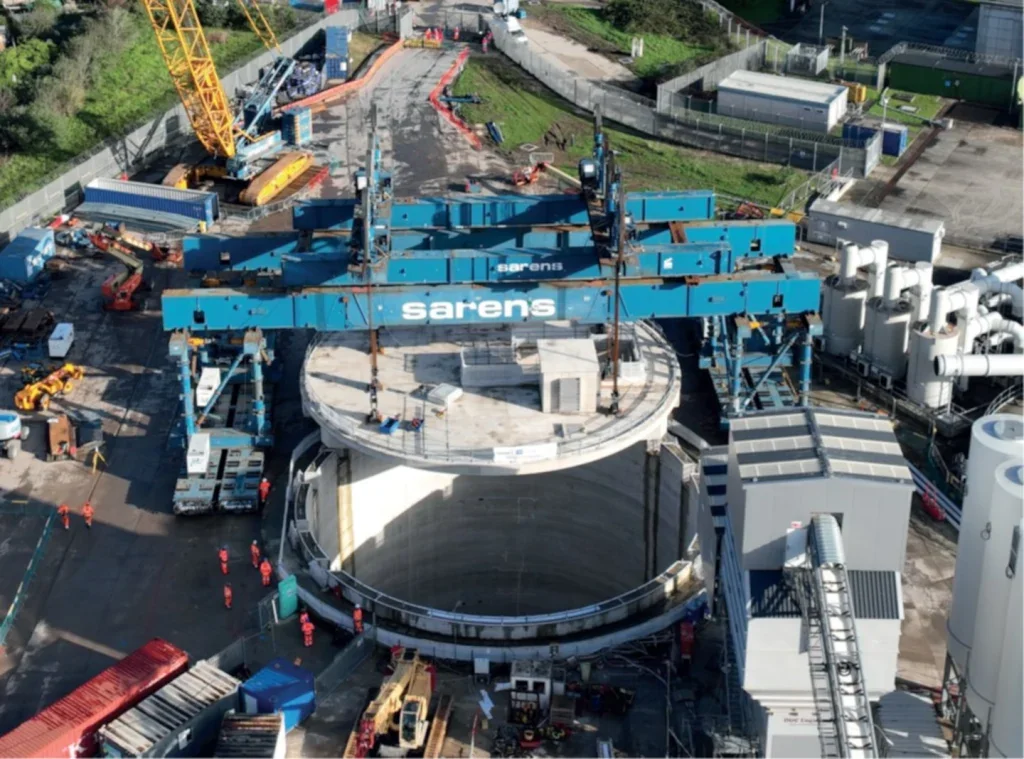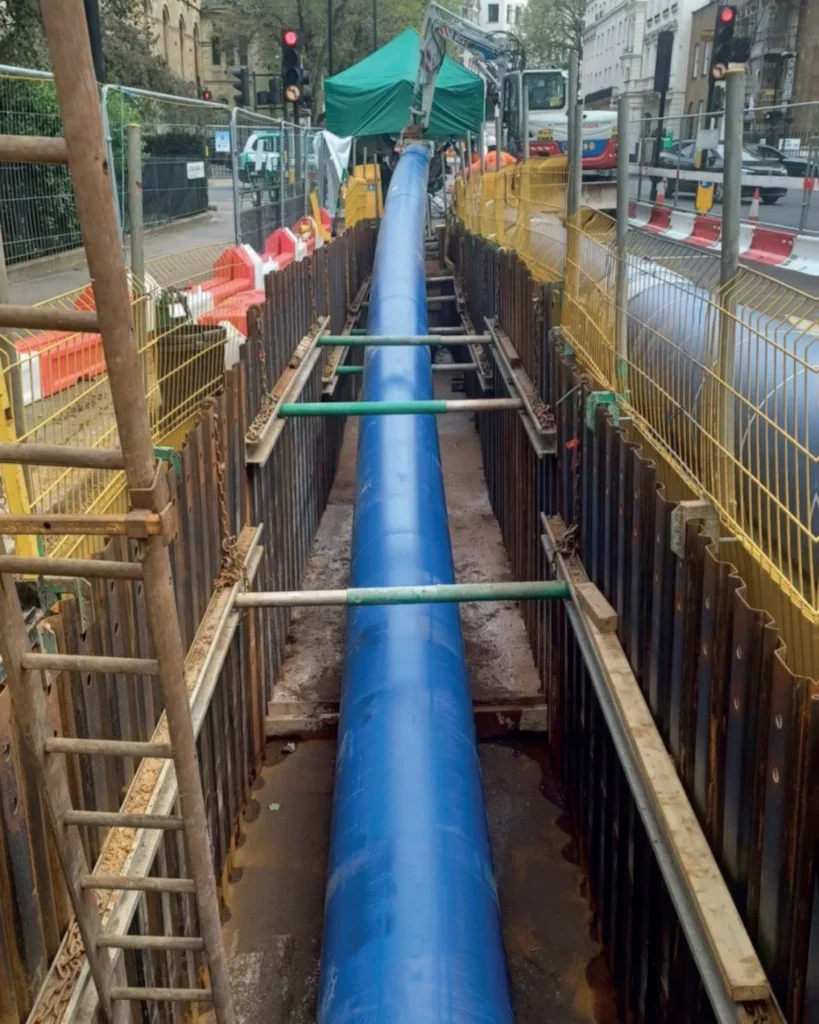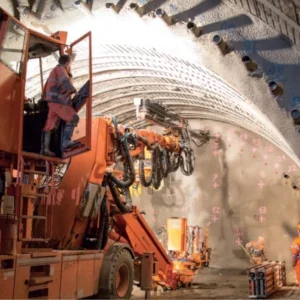
We briefly spotlight on progress on two major new large diameter sewer projects that are at advanced stages of construction and starting to come into operation, plus the ever necessary smaller diameter works using trenchless tunnelling to repair and renew underground assets.
London
Major tunnelling for the London Tideway Tunnel began in 2018 and recently the first sections came into operation, at four sites, with more this year.
The project was one of the major tunnelling endeavours in the UK over recent years, especially so in London which had dominated. In the capital the other large works have included large investments for transport (Crossrail, now the Elizabeth Line; HS2; and, Silvertown) and also Phase 2 of London Power Tunnels.

In terms of water and sewerage utility services, the London Tideway Tunnel has been the biggest addition to the capital’s fundamental major infrastructure for decades – the last being the London Ring Main, for clean water.
While the Ring Main created a large-scale loop of clean water, to be tapped, the Tideway Tunnel is more like a drainage river, like a line through the capital into which many other sewers will flow – including the 6.9km-long Lee Tunnel. That drainage line is therefore deep, located way below the route of the River Thames – the city’s surface level natural catchment drainage channel. For the flows expected, Tideway is also a large diameter as well as long tunnel.
Tunnel excavation finished three years ago, secondary lining in 2023.
The project is being delivered by three consortia: a JV of BAM Nuttall, Morgan Sindall Infrastructure and Balfour Beatty on the west region; Ferrovial Agroman UK and Laing O’Rourke on the central region; and, the team of Costain, Vinci Construction Grands Projets and Bachy Soletanche is working on the east section.
System integration is being delivered by Amey.
Coming online fully this year, the 25km-long Tideway tunnel will see Thames Water operate the system as part of its London wastewater network. The full London Tideway Tunnel network (including the Lee Tunnel) has a combined capacity of 1.6 million m3 and it is expected the investment should virtually eliminate the harmful effects of sewage pollution in the Thames through central London.

Auckland
Tunnelling on Watercare’s 16.2km-long Central Interceptor tunnel in Auckland is mostly complete.
Much of the excavation has been performed by TBM ‘Hiwa-i-te-Rangi’, which last autumn reached the 30m-deep intermediate shaft in Western Springs – which was the original end point for the tunnel, at 13km long. It has twice been extended during the construction period and will end in Point Erin, Herne Bay, in Auckland.
The other end of the Central Interceptor is at Māngere, from where the TBM started its journey, in 2021. On the way to Western Springs, the machine crossed under Manukau Harbour and passed through the 110m-deep Hillsborough Ridge – the deepest section of the route. Preparations for the reception shaft at the Point Erin are underway.

Watercare signed the contract for the Central Interceptor project with Ghella Abergeldie JV in 2019.
The major investment is to significantly reduce wet weather overflows and so improve water quality at Tāmaki Makaurau (Auckland) beaches and waterways. The Central Interceptor is 4.5m-diameter with a 1:1000 gradient to enable gravity flow from central Auckland to Māngere Wastewater Treatment Plant.
Works on the project also include link sewers, which have been completed. With the first section of the project about complete, the entire Central Interceptor is due to be finished in 2026.






